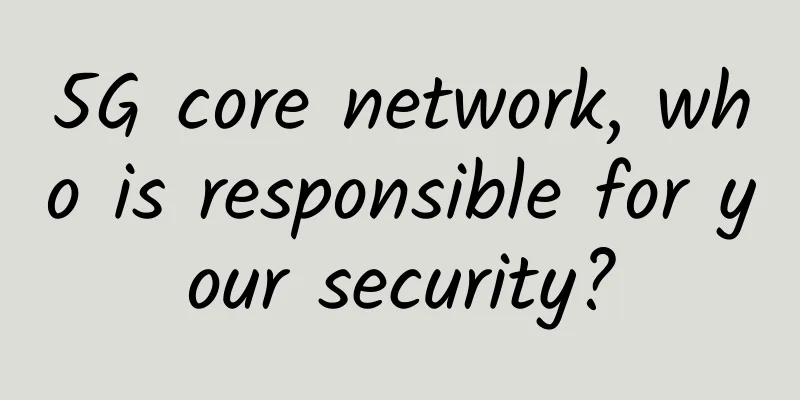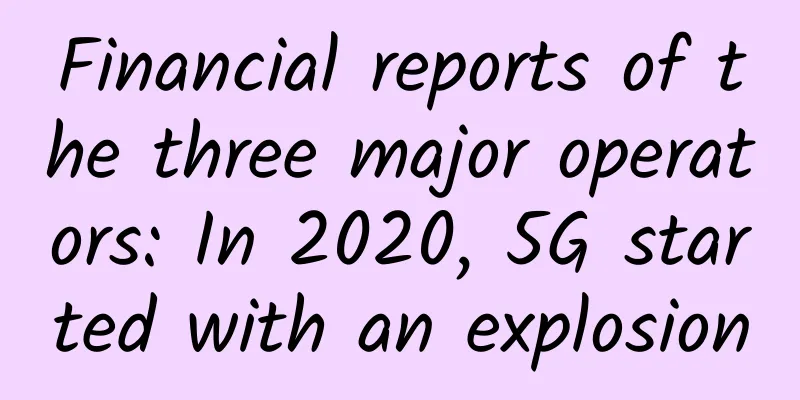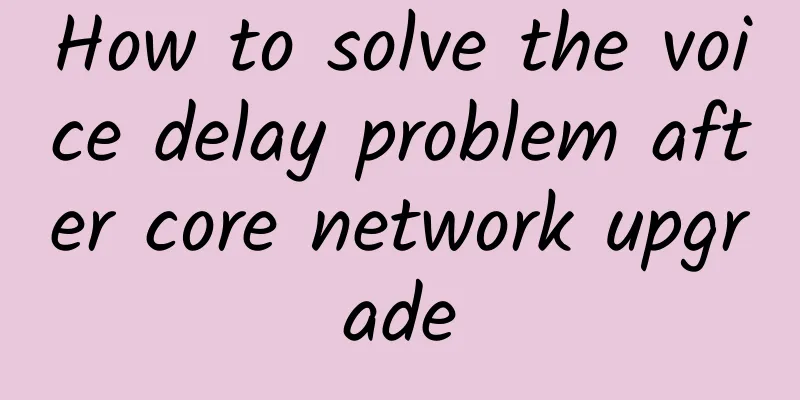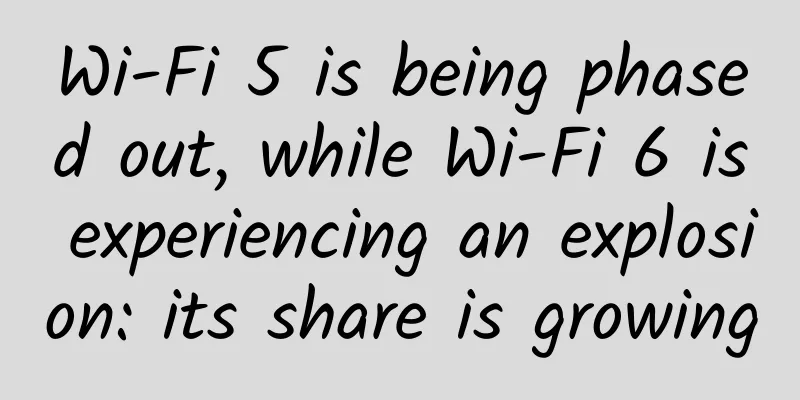5G core network, who is responsible for your security?

|
As we all know, in the 5G era, we are greeted by a world where everything is connected. With the continuous development of the Internet of Things, more and more devices need to access the 5G network, but this also means that these devices will become potential targets for attacks by criminals. Have you ever thought that in the era of the Internet of Things, viruses may infect cars in motion and smart home devices in use... When a large number of terminals access the core network through the transmission network, who will ensure the security of the 5G core network (5GC)? 5GC Threat AnalysisThe above scenario may be just a microcosm of the security threat of 5GC. Based on cloud architecture, 5GC has achieved the decoupling of software and hardware by introducing virtualization technology, and deployed virtualized network elements on cloud infrastructure through NFV technology, no longer using proprietary communication hardware platforms. Therefore, the physical environment that was originally considered safe has become unsafe.
Since 5GC has many potential risks, can't criminals or hackers do whatever they want? No way! 5GC Security ArchitectureIn response to the above threats, a 5GC security architecture based on 5G security specifications is proposed. This security architecture looks quite complicated! Next, I will explain the 5GC security architecture from the following five aspects. If the 5GC network is compared to the national highway network and the data in the network is compared to the vehicles passing through, we can simply make an analogy between the several levels of the 5GC security architecture. (1) Access security Access security is like the annual vehicle inspection by the vehicle management office. Only vehicles that meet safety requirements can be on the road. Similarly, when various user equipment (UE) access the 5G core network through the base station (NR), the 5G core network will perform access authentication and access control on the user equipment, and perform data encryption and integrity protection during data transmission. In the 5GC system, a two-way authentication method is used to ensure that the access device accesses the real and secure 5G core network, and access to "fake base stations" is prevented. At the same time, the access device is authenticated through UDM and AUSF. For 3GPP access and non-3GPP access, a unified access process and authentication method are adopted, and multiple different authentication methods such as EPS-AKA, 5G-AKA, and EAP-AKA' are supported. The 5G authentication process enhances the control of the home network and prevents possible fraud in the visited network. (2) Network security The 5GC network achieves network security by dividing different network planes and transmitting different types of data. Data on a certain network plane will not run to other network planes. This is similar to the existence of expressways and national and provincial roads between cities, and BRT dedicated lanes within cities, which reflects the value of classified management. (3) Management Security Managing security is like the function provided by the Traffic Management Bureau: managing traffic and serving the vast number of vehicles. Traffic police in different areas are responsible for traffic safety in their respective areas. Similarly, 5GC NF is managed and orchestrated through MANO. MANO supports decentralized and domain-based security management scenarios.
(4) Capability exposure security 5GC supports network capability opening, and opens network capabilities to third-party applications through capability opening interfaces, so that third parties can design customized network services according to their own needs. Capability opening security focuses on the security protection of open interfaces and uses secure protocol specifications. When third-party user devices access through APIs, authentication is required. (5) Data security Data in the 5G era is characterized by large data volume, multiple data types, and wide exposure, so it is crucial to establish a 5GC data security system to protect the security of 5G data. The 5GC data security system is established based on the data protection principles of data minimization, anonymization, encrypted transmission, and access control. Service-Oriented Architecture SecuritySince 5GC adopts a service-oriented architecture, in order to address the security risks brought by the new service-oriented architecture, the 5GC security architecture adopts a complete service registration, discovery, and authorization security mechanism to ensure service-oriented security.
Virtualization Platform SecurityThe virtualization platform provides the deployment, management, and execution environment for all 5G core network NFs. To achieve virtualization platform security, Hypervisor plays an important role:
For users, by configuring different VDCs, communication isolation between virtual machines can be achieved. By configuring security groups, end users can control the intercommunication and isolation relationship of virtual machines to enhance the security of virtual machines. ConclusionNow, you know how the security of the 5G core network is guaranteed. The 5GC security architecture proposed by ZTE ensures the security of the 5GC network from the aspects of access security, network security, management security, data security, and capability exposure security, greatly reducing security threats such as illegal access of user devices and leakage of communication data between network elements. In addition, for multi-access edge computing (MEC) scenarios, ZTE has proposed MEC security architecture and solutions to ensure the security of the core network in MEC scenarios. |
<<: Russia faces internet communications crisis due to equipment shortage
>>: From ServiceMesh to Decentralized SOA Bus
Recommend
CloudCone Christmas promotion, Los Angeles MC data center KVM VPS annual payment starts from $12.7
CloudCone is a sub-brand of Quadcone, founded in ...
Qualcomm predicts that by 2035, China's 5G value chain will contribute nearly 10 billion yuan in economic value
Recently, at the 2021 Annual Meeting of the China...
Megalayer: 40% off on Hong Kong Alibaba/Huawei Cloud hybrid line servers, 50% off on high-defense servers, and 50% off on home broadband VPS
Megalayer has released its regular promotion for ...
You clearly have a 4G phone, but the operator still wants you to sign up for a 5G package?
According to data from the China Academy of Infor...
The love-hate relationship between TCP and UDP
Recently, the epidemic in Qiaoxi District, Shijia...
China's five major mobile app stores jointly launch 64-bit Android ecosystem migration
(April 19, 2021) In order to assist Chinese Andro...
F5 creates “applications that are aware, controllable, and adaptable” to help enterprises achieve extraordinary digital experiences
On December 16, 2020, F5 held an online press con...
Wireless network signal optimization method during WLAN system implementation
In project practice, we have spent a lot of money...
What the future of wide area network (WAN) management looks like
The recent surge in the number of employees worki...
TCP and UDP, 123 things you need to know (TCP)
Preface As a network operation and maintenance pe...
Justhost newly launched data centers in Finland/Canada/Los Angeles, 200M-1Gbps unlimited traffic starting from $4.1/month
Justhost has been expanding since October, with n...
What network automation certification options are available today?
Networks are increasingly reliant on software and...
What is DNS? Why are there only 13 DNS root servers? Is it really that difficult to give one to China?
The Domain Name System is one of the most importa...
A must-read for network engineers! Essential knowledge points for IP routing in 2020
RIP RIP (Routing Information Protocol) is a pure ...
Obstacles to 5G rollout
While 5G has the potential to open up many exciti...









